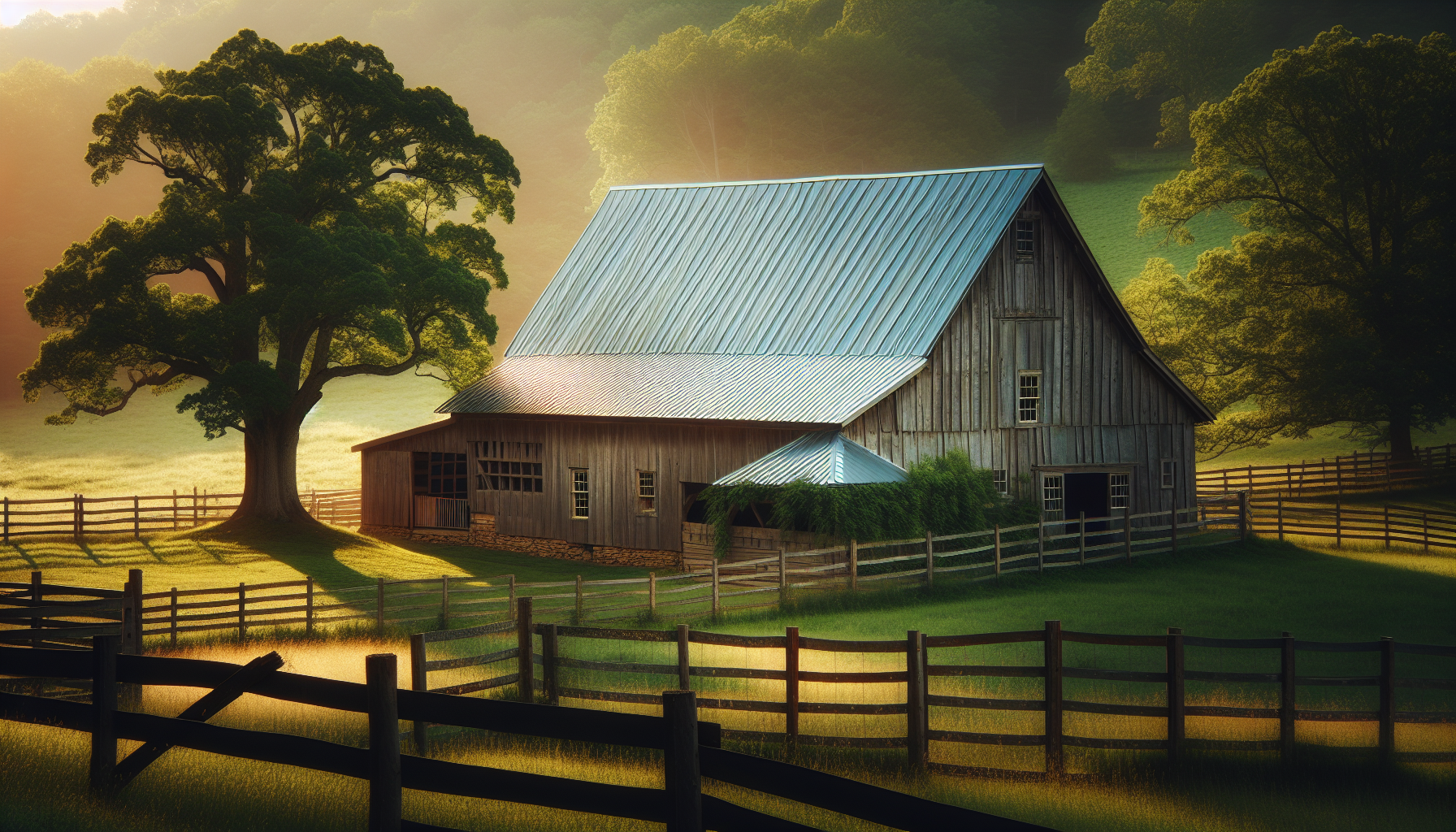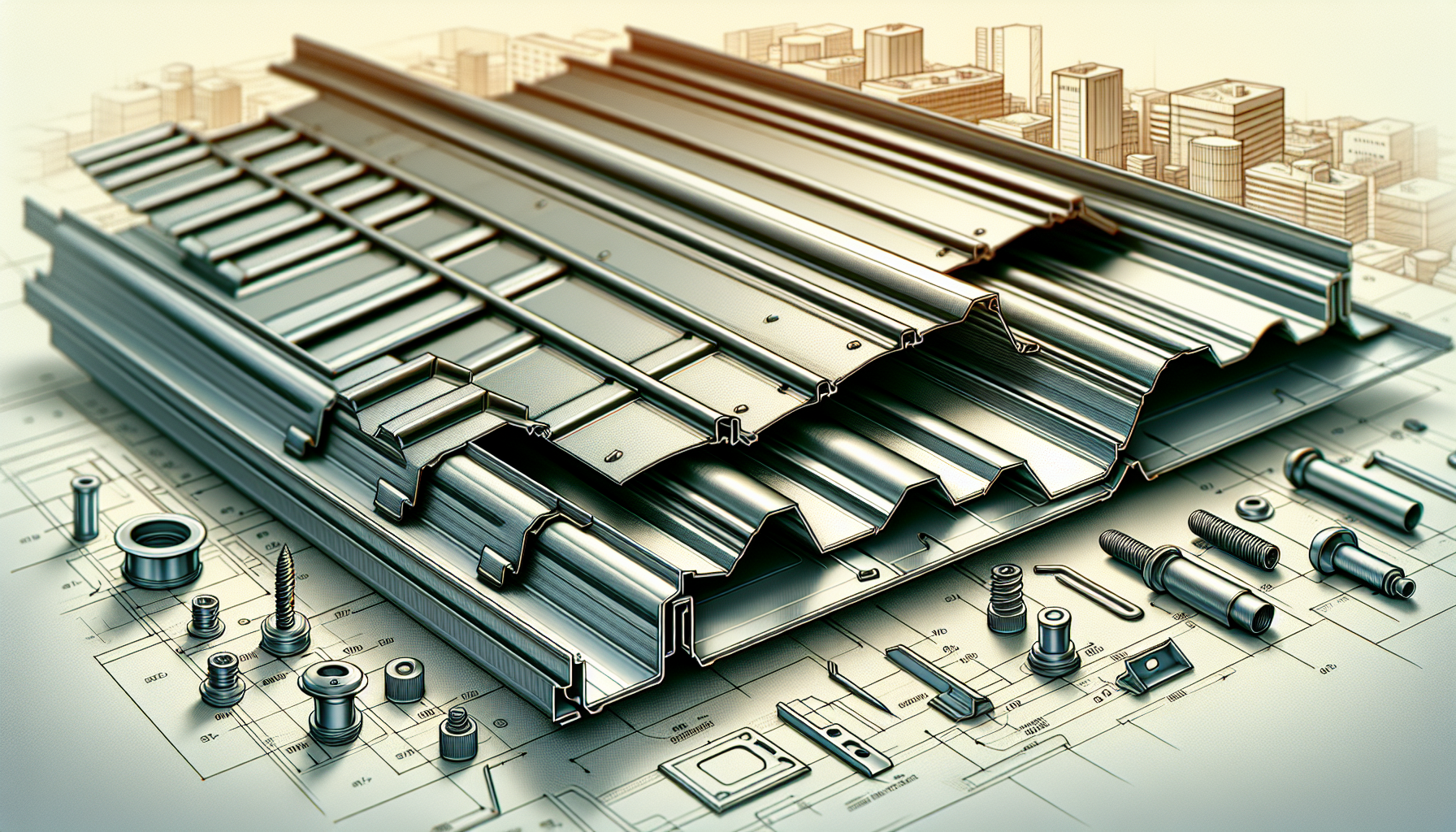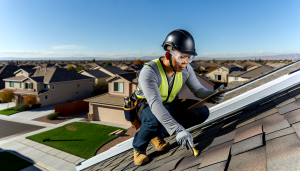If you’re considering metal roofing types for your home, understanding your options is key. This guide streamlines the selection process, contrasting the durability, cost, and aesthetic of popular metals like steel and aluminum with styles like standing seam or corrugated. Discover which metal roofing types match your needs, without the fluff, giving you clarity on the most sensible investment for your roofing project.
Table of Contents
ToggleKey Takeaways
- Metal roofing offers a variety of materials including steel, aluminum, copper, and zinc, each with distinctive properties like affordability, lightweight, corrosion resistance, and eco-friendliness.
- The installation of metal roofing systems comes in different styles and requires careful consideration of the type of fasteners used—exposed for economics or concealed for a sleeker, weather-tight finish.
- Metal roofs provide long-term benefits including durability, fire resistance, energy efficiency, and environmental sustainability, despite a potentially higher initial investment compared to traditional asphalt shingles.
Exploring Metal Roofing Materials

Asphalt shingles or clay tiles are often associated with roofing, but another material, metal, is gaining traction. Metal shingles, standing seam metal roofs, and corrugated metal panels are among the many metal roofing materials available, each presenting unique advantages and disadvantages.
Steel Panels: The Affordable Choice
One of the most popular choices for metal roofing is steel panels. Not only are they affordable, but they also offer incredible durability and versatility. Steel panels are known for their resilience against harsh weather conditions, making them a financially wise choice in the long run. Among the various types of metal roofing, steel panels stand out as a top choice for homeowners and contractors alike.
Moreover, steel panel roofs typically last between 40 to 70 years, outlasting materials like asphalt shingles.
Aluminum Roofs: Lightweight and Corrosion-Resistant
Aluminum roofing is another popular option. Here are some key features:
- Lightweight and easy to handle and install
- Corrosion-resistant, making it ideal for coastal areas
- Limited color options compared to other materials
- Lifespan of around 50 years
Copper Roofing: Elegance that Lasts
For those seeking a more premium option, copper roofing is worth considering. Copper roofs are known for their unique appearance that ages beautifully over time. However, this elegance comes with a higher price tag compared to other metal roofing materials.
Zinc Roofs: Eco-Friendly with a Protective Patina
Zinc roofs, while not as common, offer an eco-friendly option that develops a protective patina over time. However, they can be susceptible to chalking, which can affect their appearance.
Deciphering Metal Roofing Styles

While material selection is important, the metal roof’s style also influences the final outcome. Whether it’s the streamlined look of standing seam metal roofs or the traditional appeal of corrugated metal roofs, each style offers unique benefits and contributes to your home’s overall aesthetic.
Standing Seam Metal Roofs: Sleek and Secure
Standing seam metal roofs offer a sleek, modern appearance. These roofs feature roll-formed metal panels connected by hidden fasteners, which not only enhances their appeal but also provides high weather resistance. A standing seam metal roof is capable of enduring gale force winds of up to 140 mph. With standing seam metal roofing, homeowners can enjoy the benefits of durability and style, making a standing seam roof an excellent choice.
Corrugated Metal Roofs: Traditional and Durable

On the other hand, corrugated metal roofs offer a traditional and durable approach. These roofs are characterized by their distinct corrugated pattern and can withstand severe weather conditions. However, corrugated metal roofing does require more maintenance than other styles.
Metal Shingle Roof: Classic Appeal
If you’re looking for a classic appeal, metal shingle roofs can be an excellent choice. These shingles mimic the look of traditional shingles, but offer the benefits of metal roofing materials.
This can be a great way to preserve the traditional look of your home while enjoying the advantages of metal roofing.
Metal Roofing Systems Explained

After selecting the metal type and style for your roof, the next step is to decide on the roofing system. Two main styles of metal roofing fasteners exist: exposed fasteners and concealed (hidden) fasteners, both widely used in metal roof construction.
While both have their merits, it’s important to understand the differences to make the best choice for your needs.
Exposed Fastener Metal Roofing: Economical and Versatile
Exposed fastener metal roofing has the following characteristics:
- Visible fasteners
- More economical and easier to install
- Popular choice for many homeowners
- May require more maintenance over time due to weather exposure
Concealed Fastener Panels: Streamlined and Weather-Tight
On the other hand, concealed fastener panels offer a streamlined and weather-tight solution, as opposed to exposed fastener panels. These panels have fasteners that are hidden beneath the panels, providing a sleek appearance and additional weather resistance. While they may cost more upfront, their long-term benefits may well outweigh the initial investment.
The Cost of Metal Roofing
What is the cost of metal roofing? Although usually pricier than conventional roofing materials, the long-term benefits can balance the initial cost.
Metal roofs are more durable, require less maintenance, and can even save you money on energy bills.
Price Per Square Foot: Understanding the Numbers
The metal roofing cost is often calculated per square foot. The price can vary greatly depending on the type of metal, with steel roofing being the most affordable option.
It’s also important to consider the cost of installation, which can be higher for metal roofing due to its weight and the precision required.
Comparing Metal Roofing to Asphalt Shingle Roofs
When compared to traditional asphalt shingle roofs, metal roofs can seem expensive. However, it’s worth noting that metal roofs can last two to three times longer, resulting in fewer replacements over time.
Furthermore, metal roofs are more energy-efficient, potentially resulting in lower energy costs over time.
Advantages of Metal Roofs Over Other Roofing Materials
Metal roofs offer advantages beyond durability and energy efficiency. They are fire-resistant, adding an extra layer of safety to your home, and can handle severe weather conditions, making them an intelligent choice for locations with heavy rain or wind.
Fire Resistant Qualities of Metal Roofing
Metal roofing materials, such as steel roofing sheets, are naturally resistant to fire. They won’t ignite or spread flames, providing an additional layer of safety for your home. This can be particularly beneficial in areas prone to wildfires or other fire hazards.
Energy Efficient Metal Roofing Options
In addition to their fire-resistant properties, metal roofs are also highly energy-efficient. They reflect sunlight and heat, keeping your home cooler and reducing the need for air conditioning.
Some metal roofs can even be coated with special reflective coatings to further enhance their energy efficiency.
Installation and Maintenance of Metal Roofing
Having acquainted with the benefits of metal roofing, let’s examine what the installation and maintenance entail.
While metal roofing requires professional installation due to its weight and the precision required, it typically requires minimal maintenance once installed.
Professional Installation: Ensuring Longevity and Performance
Professional installation is crucial for the long-term performance and durability of your metal roof. Only a trained roofer or professional installer can ensure that your roof is installed correctly, which can prevent potential issues down the line and extend the lifespan of your roof.
Keeping Your Metal Roof in Top Condition
Once your metal roof is installed, regular maintenance can help keep it in top condition. This typically involves removing debris and conducting an annual roof washing.
Regular inspections can also help identify any potential issues before they become major problems, ensuring that your roof lasts as long as possible.
Aesthetics and Personalization of Metal Roofing
While the practical advantages of metal roofing are significant, the aesthetic appeal of your roof is equally essential.
Fortunately, metal roofing offers plenty of options for customization, allowing you to create a look that’s uniquely yours.
Color Choices for Metal Roofs

One of the ways you can customize your metal roof is through color. Metal roofs come in a wide range of colors, allowing you to choose a shade that matches your home’s exterior and your personal style. Some popular color options for metal roofs include:
- Vibrant reds
- Muted grays
- Earthy browns
- Classic blacks
- Cool blues
The options are virtually endless.
Design Flexibility with Metal Roofing
Beyond color, metal roofing also offers design flexibility. You can choose from a variety of panel profiles and finishes, allowing you to create a roof that complements your home’s architectural style. Whether you prefer a sleek, modern look or a more traditional aesthetic, metal roofing can accommodate your design preferences.
Environmental Impact and Sustainability
Considering the environmental impact of our decisions is vital in the current world. Metal roofing, due to its recyclability and energy-efficient qualities, is a sustainable and environmentally friendly choice compared to traditional roofing materials.
Metal Roofing and Eco-Friendliness
Metal roofing is not only durable and long-lasting, but it’s also eco-friendly. Many metal roofing materials are made from recycled content and can be fully recycled at the end of their lifespan.
Plus, their reflective properties can help reduce your home’s energy consumption, making them a green choice for roofing.
Reflective Coatings and Cool Roof Technology
To further enhance the energy efficiency of your metal roof, you might consider reflective coatings or cool roof technology. These options can help reflect more sunlight and reduce heat absorption, leading to a cooler interior and lower cooling costs.
Choosing the Right Metal Roof for Your Home
At this point, you should be well-versed in the benefits, costs, and options that come with metal roofing. The decision on which metal roof suits your home best depends on several factors such as your budget, aesthetic preferences, and local climate conditions.
Factors to Consider When Selecting a Metal Roof
When selecting a metal roof, consider the following factors:
- Initial cost
- Maintenance requirements
- Lifespan
- Style and color that will complement your home’s exterior
- Local climate—certain metals may perform better in specific conditions.
Expert Tips for Picking the Perfect Metal Roof
Finally, don’t hesitate to consult with professionals or experts to help you make the best decision. They can provide advice based on their experience and expertise, helping you find the perfect metal roof for your specific needs and preferences.
Summary
In conclusion, metal roofing offers numerous benefits over traditional roofing materials, including durability, energy efficiency, and a wide range of design options. While the initial cost can be higher, the long-term benefits can make it a smart investment. From steel panels to copper roofing, there’s a metal roofing option to suit every home, style, and budget.
If you enjoyed this article, check out our site Amtek Roofing.
Frequently Asked Questions
What are the different types of metal roofs?
There are several types of metal roofs, including corrugated metal, standing seam metal, stone-coated metal, metal shingles, metal tiles, and metal slate. They each have different costs and styles.
What is the best metal roofing?
The best metal roofing is copper, as it’s the longest lasting and most durable option, although it’s also the most expensive. Copper is commonly used in Europe and has a lifespan of hundreds of years.
What are the advantages of metal roofs over other roofing materials?
Metal roofs outperform other roofing materials in terms of durability, energy efficiency, and fire resistance, making them a smart choice due to their ability to withstand severe weather conditions and require less maintenance.
How much does metal roofing cost?
The cost of metal roofing installation typically ranges from $5.50 to $14.00 per square foot, depending on the type of metal and roof style.
How long does a metal roof last?
A metal roof can last between 40 to 70 years, making it a durable and long-lasting option compared to traditional asphalt shingles.


